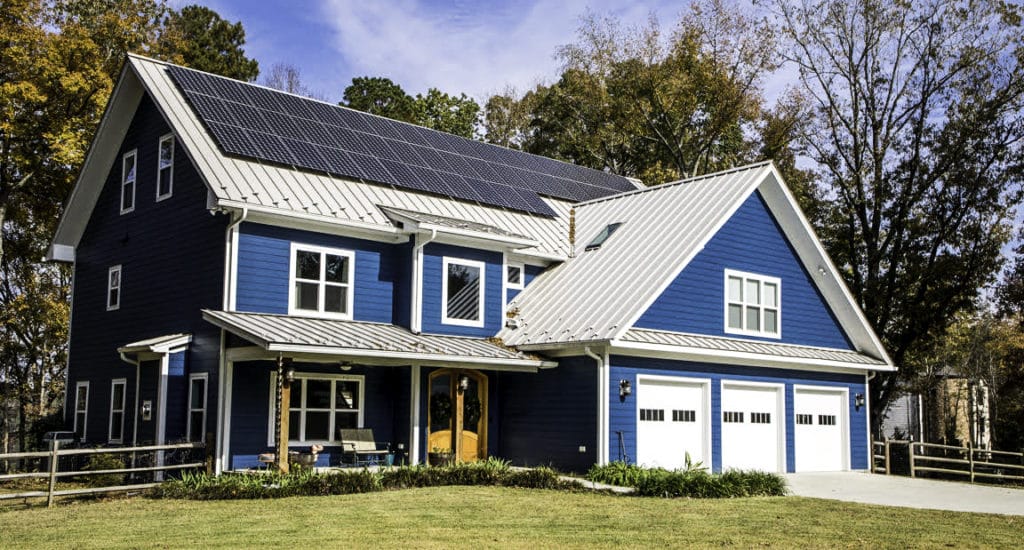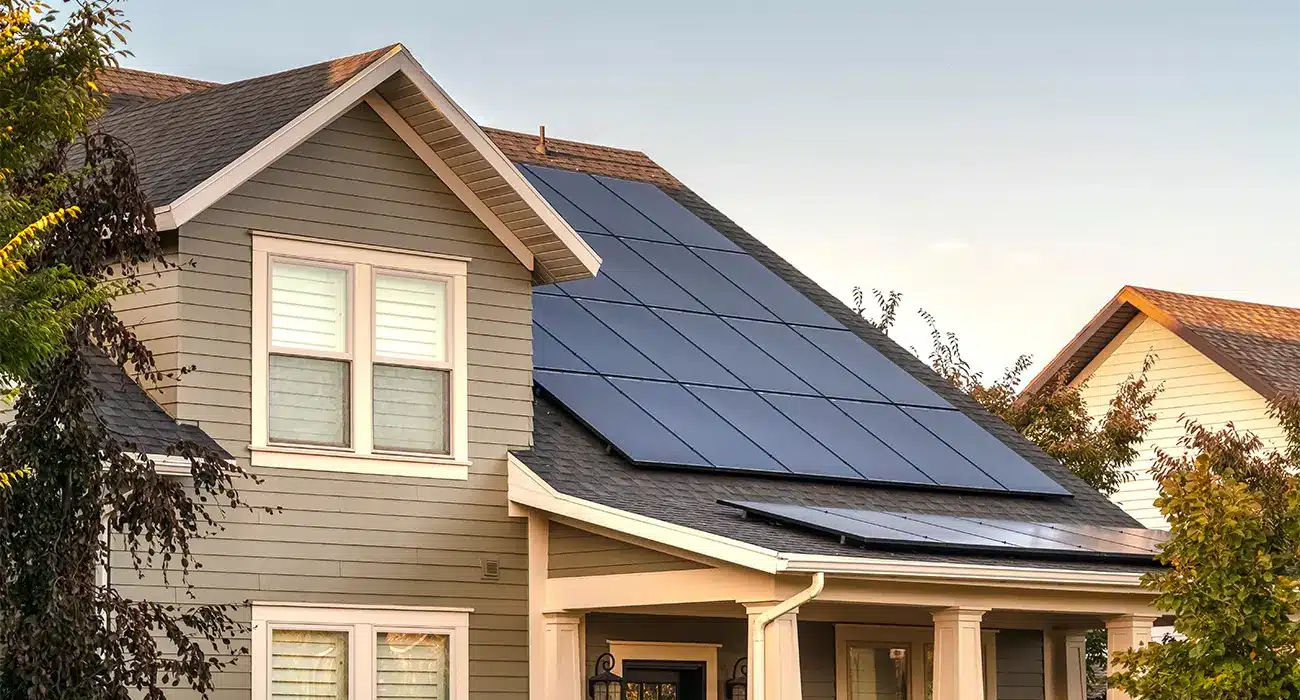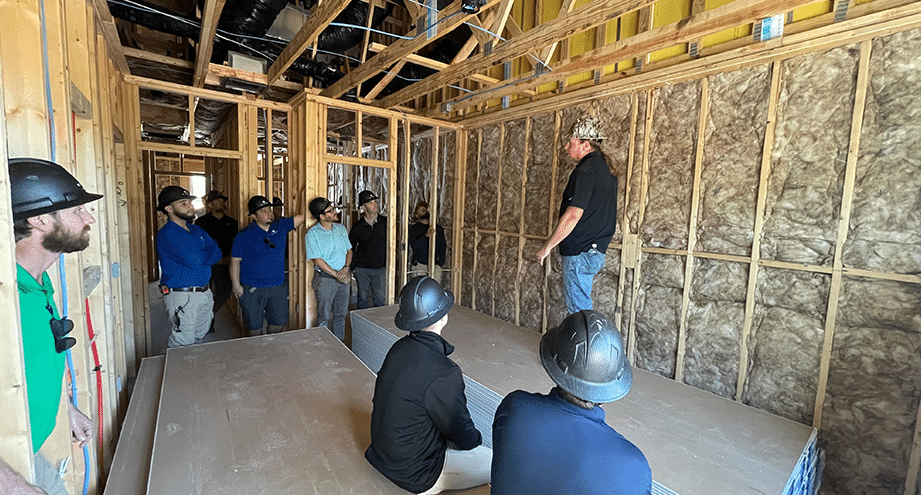Welcome to the first solar spotlight in our new series showcasing the stories of our Shine Tribe members! Seeing completed installs on gorgeous homes like this is always rewarding, but at the end of the day, learning about our customers’ journeys and why they chose to go solar is even more fulfilling. It’s the stories that come from getting to know our Tribe that motivate us each day and give us power to continue improving the way people make and use energy with as much enthusiasm as when we first began over 17 years ago. Our first solar spotlight comes from a Shine Tribe member in southern Wake County who first went solar with us in 2015 and recently upgraded their PV system in 2018.
System Size
12.88 kW
Annual Production
16,924 kWh
Energy Usage Offset
60%
Year Installed
2015 & 2018
Why Did You Want to Go Solar?
The initial decision in 2015 for solar was part economic, part environmental, but that equation is shifting more towards the environment. Initially, we weren’t sure what size of an array that we would need since the house was designed by us and hadn’t been built. So we were working purely with estimates when sizing our array the first time around. We always thought that we would upgrade at some point in the future.
What led you to add more capacity to your solar system?
We were in Alaska this summer and saw first hand the damages that climate change has inflicted. We were sailing to the Columbia Glacier which has retreated 12 miles in the past 40 years, losing over 30 cubic miles of ice, when a passenger said “There’s nothing we can do about this”. I took a deep breath, and started asking him questions. I learned that he lost his house due to Hurricane Harvey, and yet he was unaware of the impact that we have done to our Earth. I decided on the bow of the ship that I was going to expand my array to reduce our grid consumption more. I’m now estimating that we will be getting 75% of our home’s electrical power from our solar array.
We have a multi-generational home with 2 families, so our energy use compared to our prior two homes is about 70% less. That’s a good step. Our son added an electric car and frankly that eats up all of the additional panels for charging. Yet that’s great for the environment as nearly 90% of his “power” comes from charging at home vs gasoline. There may not be an economic payback for 5-6 years, but there is an immediate payback for reducing carbon emissions.
With the upgrade, we have now reached the maximum number of solar panels that we can expand on our system with our current inverters. The production is being clipped at the inverter maximum output because inverters can not handle more DC power than they can convert, so the extra power just dissipates. Technically this means beautiful sunny days have a flat power curve from 1045 to 1430 (approximately). Until we run for a year and can estimate the power that we can’t harvest, it may not be economical or green to add the next larger inverter. We may be looking for a totally new array one day, ground-based, to replace the remaining grid usage.
What was your initial reaction when your solar system was being installed on your new home?
Watching the panels being installed was exciting, especially knowing that we were about to reduce our impact on the environment. Soon after we switched on the system, we turned on eGauge to follow the panel production — frankly it is quite addictive to watch the power loads and generation change throughout the day. I know exactly what the big power users are in our home, and we combine that knowledge with a demand controller so we can minimize our peak loads. We still use eGauge often to see what we are producing and what our historical usage is.
Can you tell us about other endeavors you & your family have undertaken to be more sustainable?
- As noted above, we use a demand controller to reduce peak loads. It automatically turns off the electric dryer, the water heater, and air conditioners as needed to maintain a maximum demand.
- We chose a heat pump hot water heater which is almost 3x more efficient than an electric element model. Side benefit, it air-conditions the garage during the summer! The wasted heat from the car engine is actually converted into heat for the hot water.
- Almost every bulb in the house is LED to reduce the energy for lighting and the energy to remove wasted heat in the summer.
- We are using home automation to control lighting and reduce power. "Alexa, turn on the hot water" starts the hot water recirculating pump before we take a shower.
- We added a whole house dehumidifier to reduce moisture without having to use the A/C extensively. Much more effective.
- The roof is a standing seam metal roof with an EPA certified coating to reduce the heat absorption. We do not have an asphalt "heat island" on top. We can see the difference between our roof and the neighbor's asphalt roof -- shortly after dark, ours will ice up and his roof may not frost over until morning. Our roof will last longer and will be less environmentally damaging when we replace it in 50 years.
- The kitchen cooktop is an induction cooktop which is more efficient than gas or electric resistive.
- Our bathroom ventilation fans are all "smart" fans that are programmable to run for the space being ventilated. Our guest bathroom vent fan is on a motion control sensor as well.
- The heating system is dual fuel (High efficiency heat pump switches to 97% gas furnace at 40F)
Anything else you want to share about going solar?
Probably the biggest disappointment is how the solar system is required to shut down when we have a grid power outage. I live in an RV for several months each year, and we know a transfer switch can technically solve the problems of generator vs shore power. Our answer has been to add a standalone generator with its own transfer switch, but I wish we could do that with solar, too.
ALSO — I just sent enough LED light bulbs to our extended family to equal half of the production of our array… a cheap way to leverage technology to help the environment. But we are still thinking about how to do more…
About the Home
4BR 3.5BA
with approx. 4,300 sq ft finished space, and over 6,500 sq ft conditioned space
1,000 sq ft
Multi-generational suite with kitchen, great room, craft room, 1BR/BA, and laundry
North Carolina
Located in southern Wake County
Environmental Impact Over 30 Years
648,893
pounds of carbon offset
643,440
equivalent miles not driven
7,135
equivalent tree seedlings planted
Ready to Start Saving?
Request a free virtual solar + energy storage evaluation today!
About Us
North Carolina’s solar power and building performance expert. Founded in 2001, we’ve worked for 20+ years to improve the way people make and use energy.














